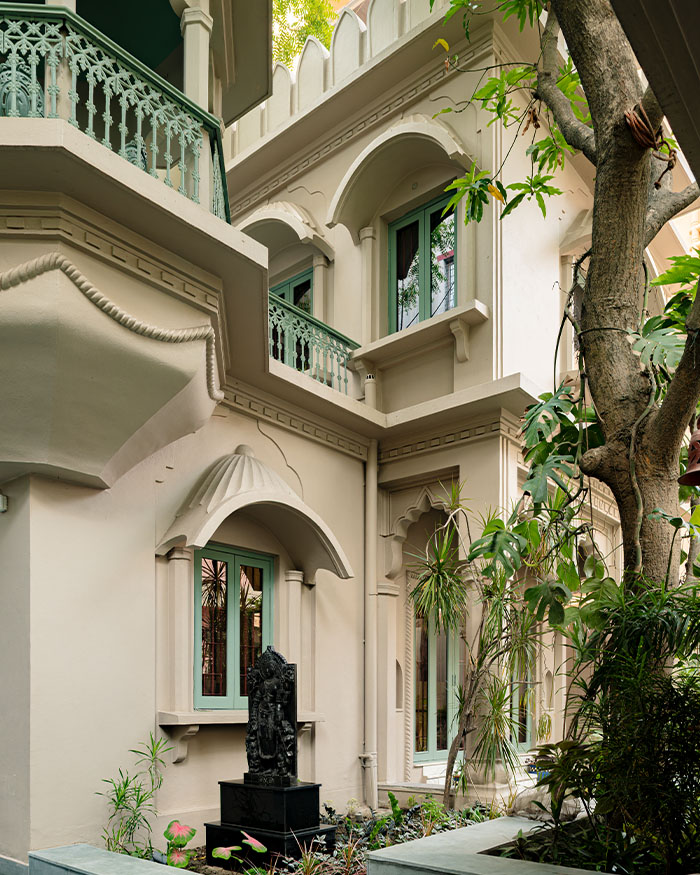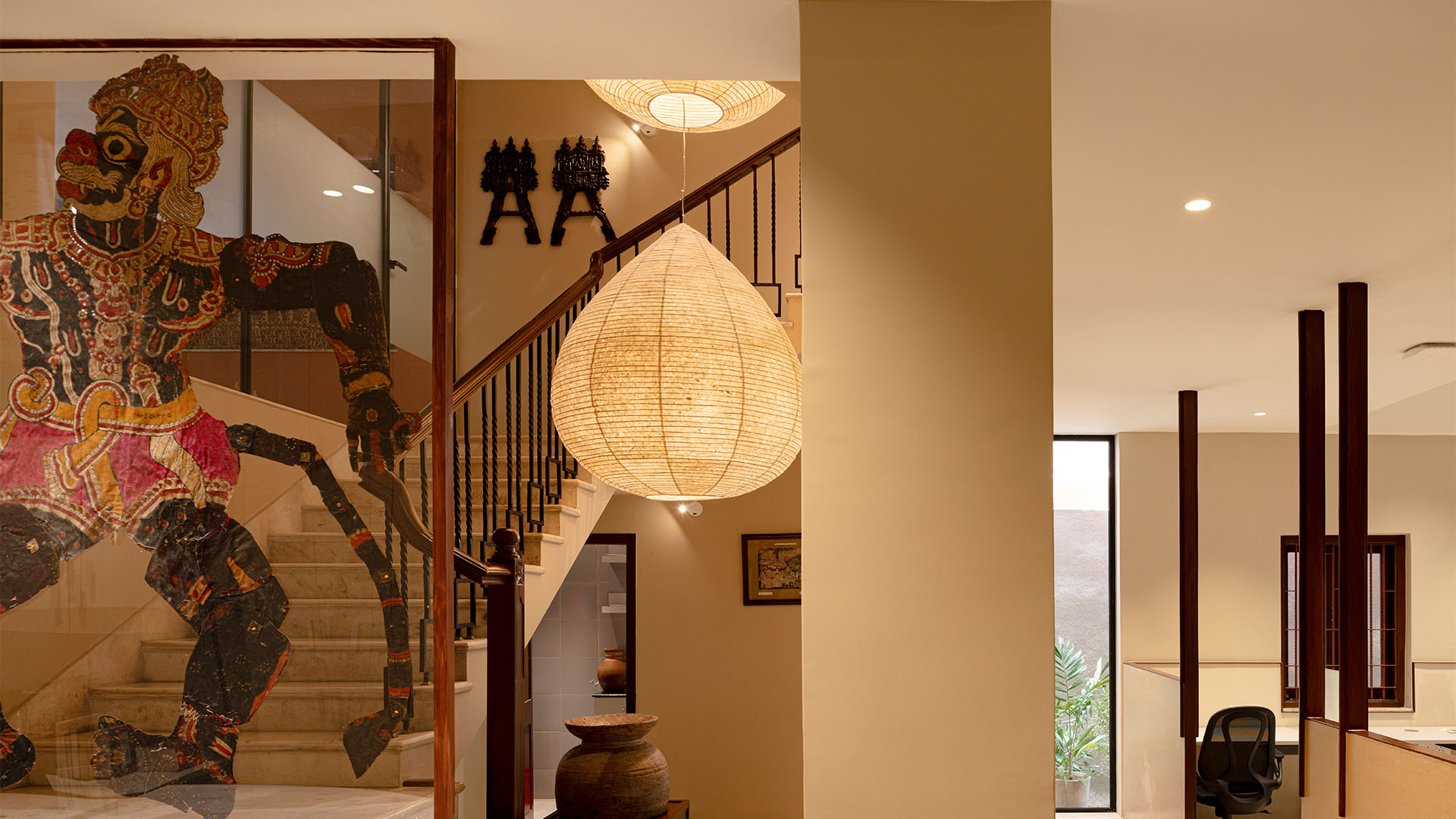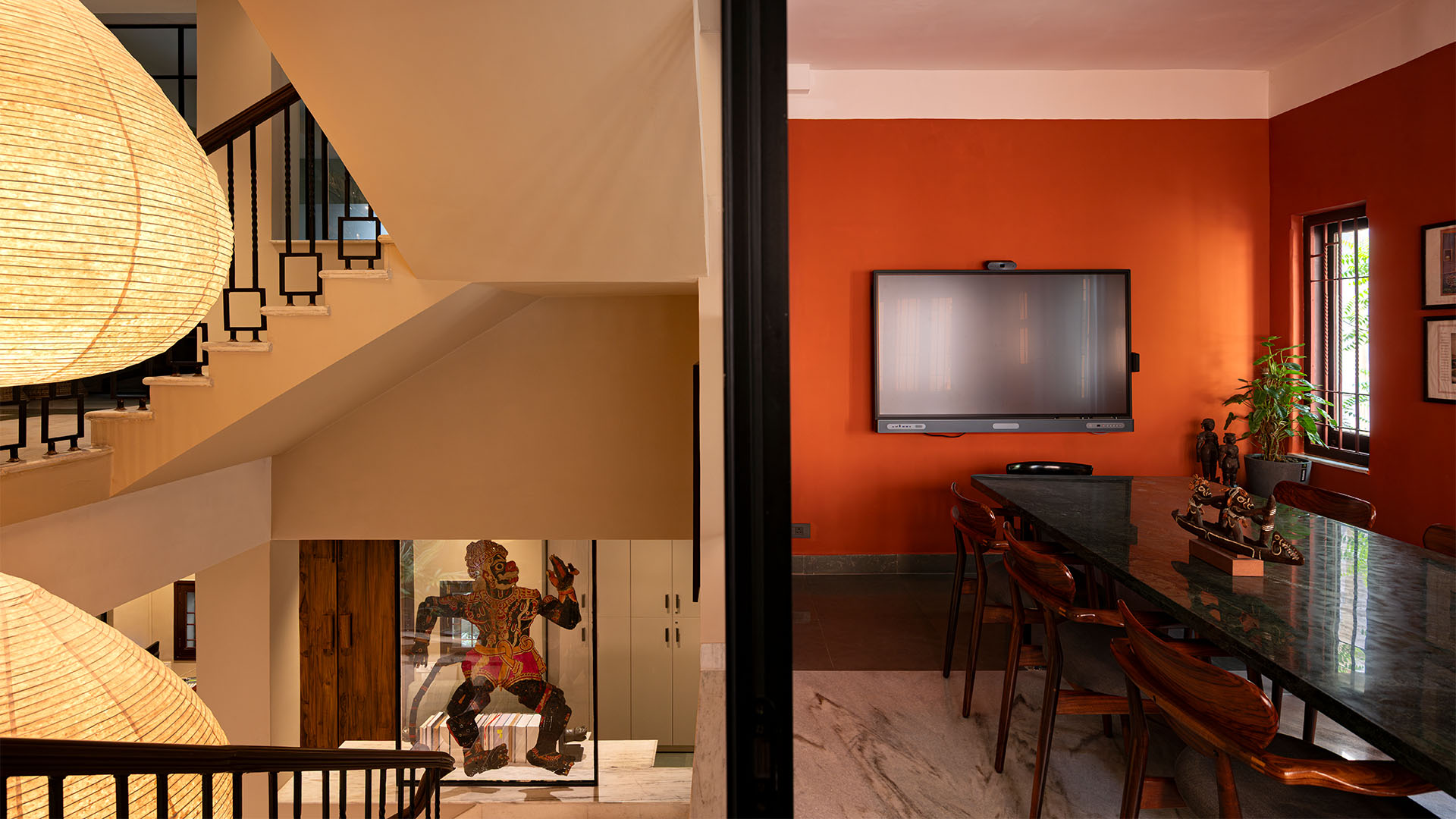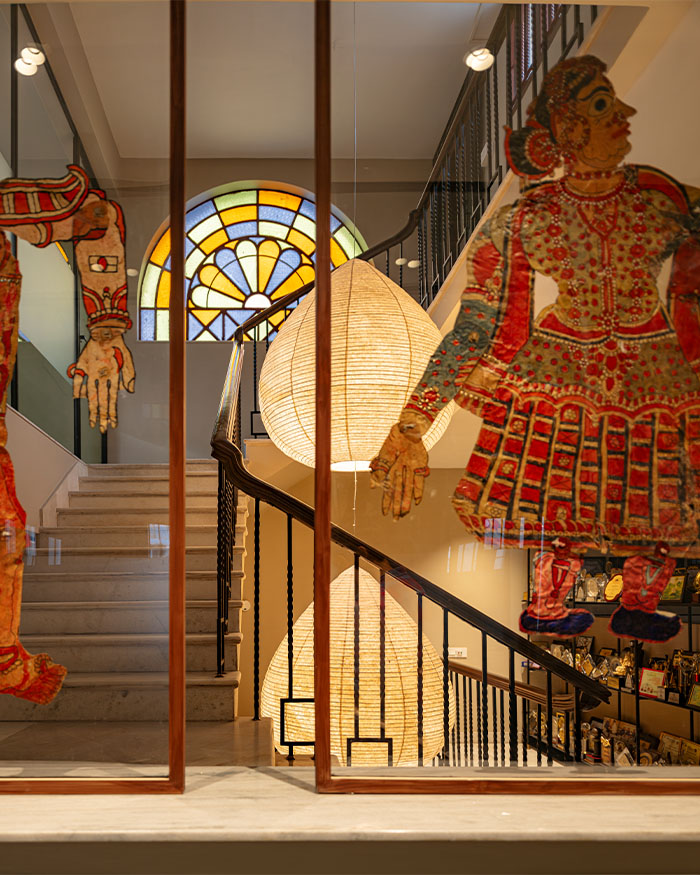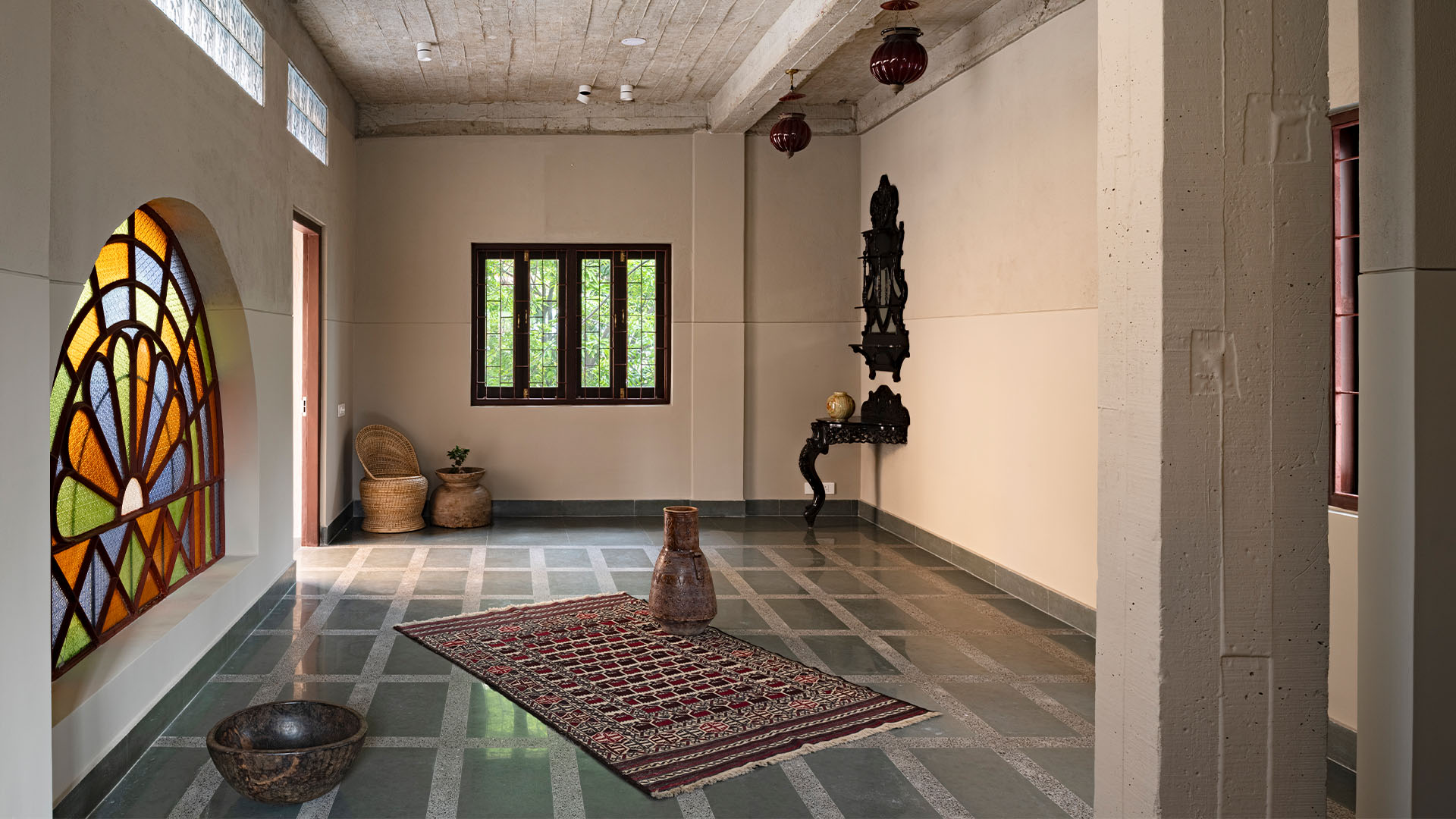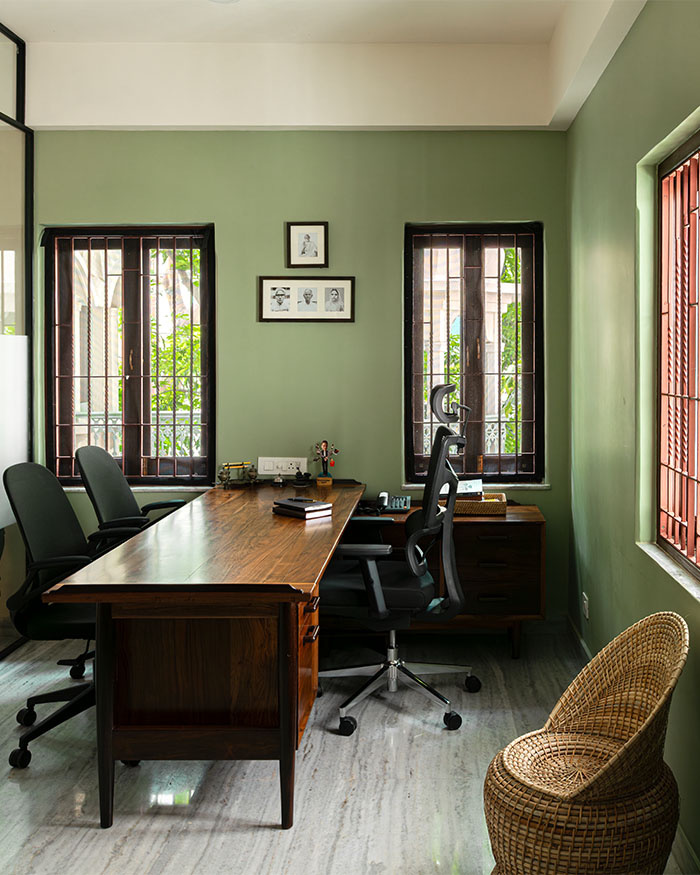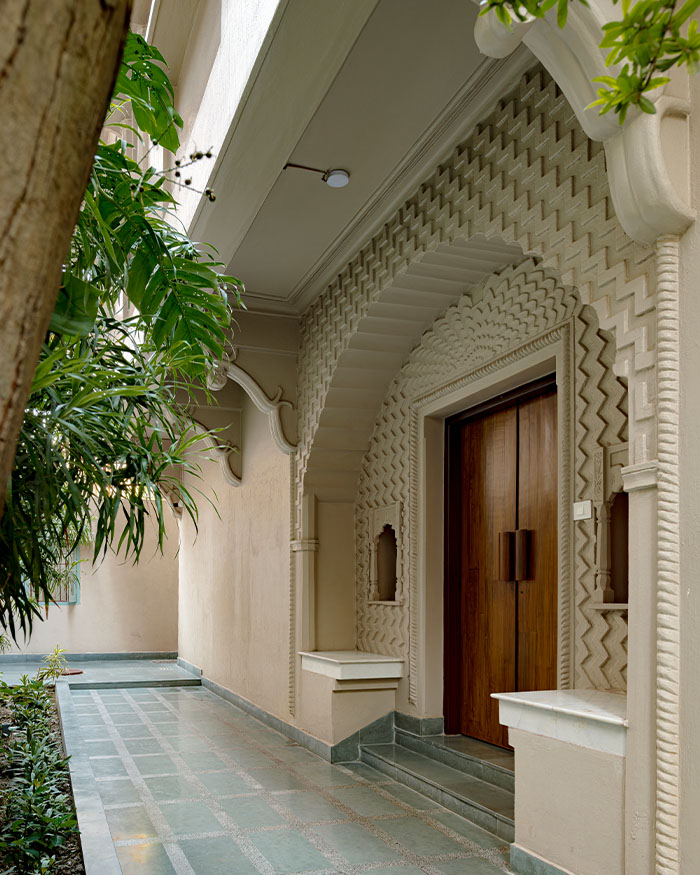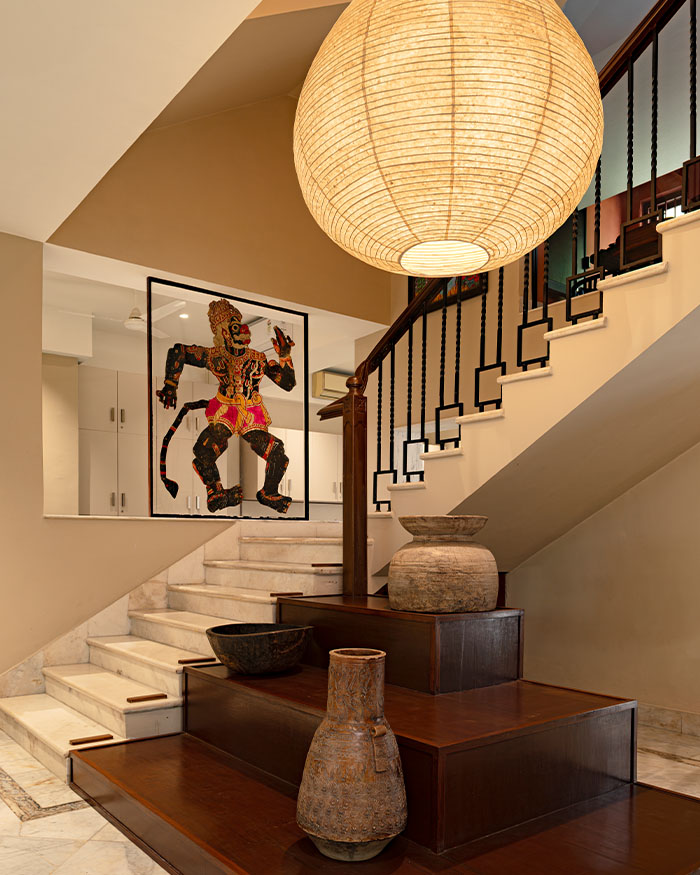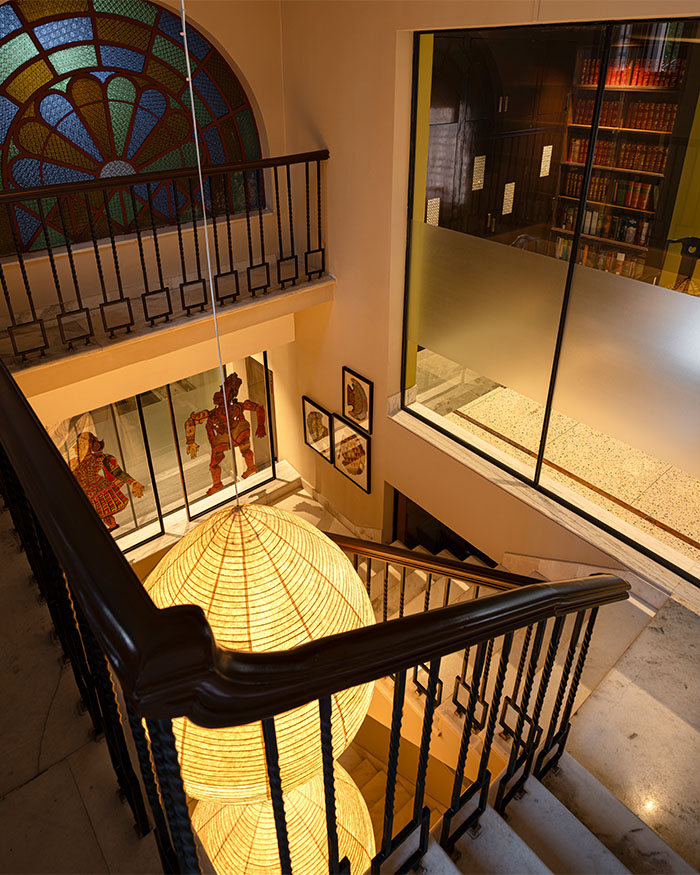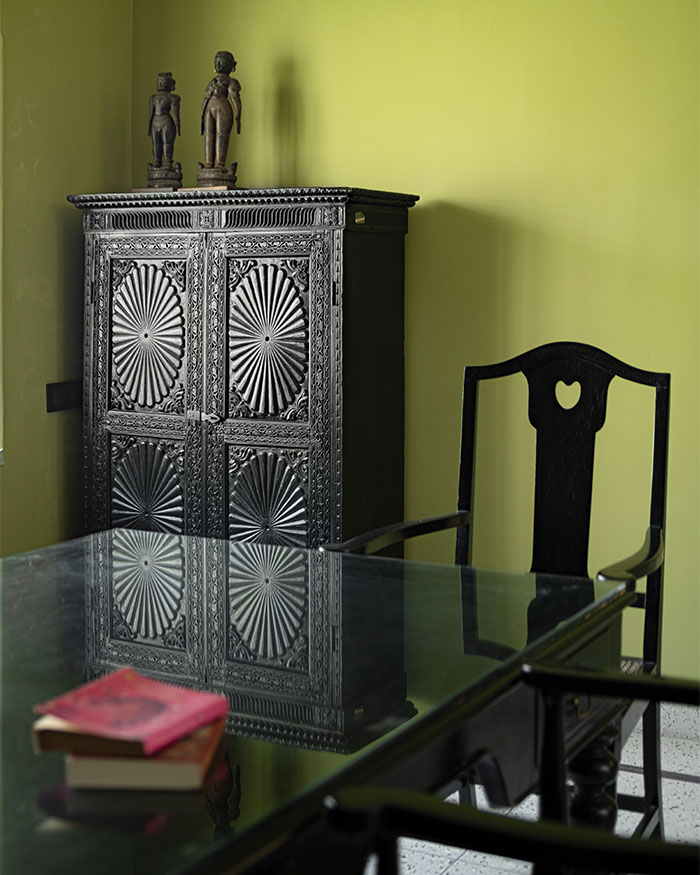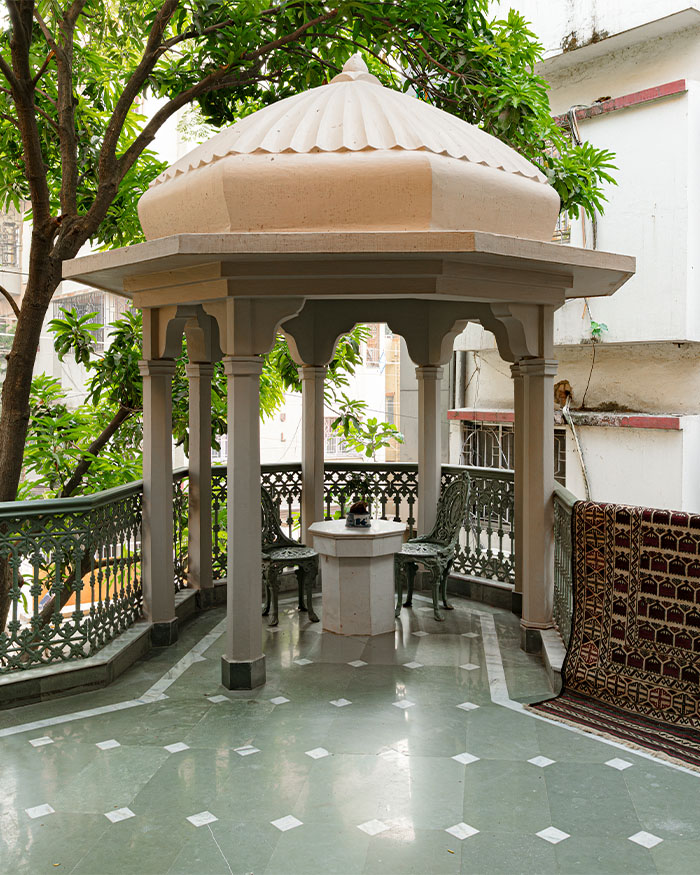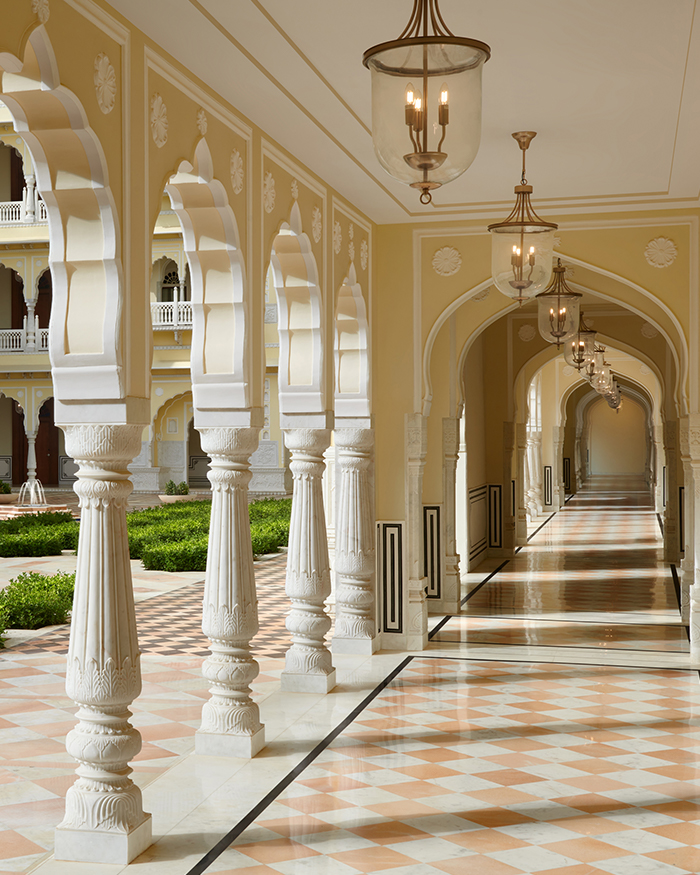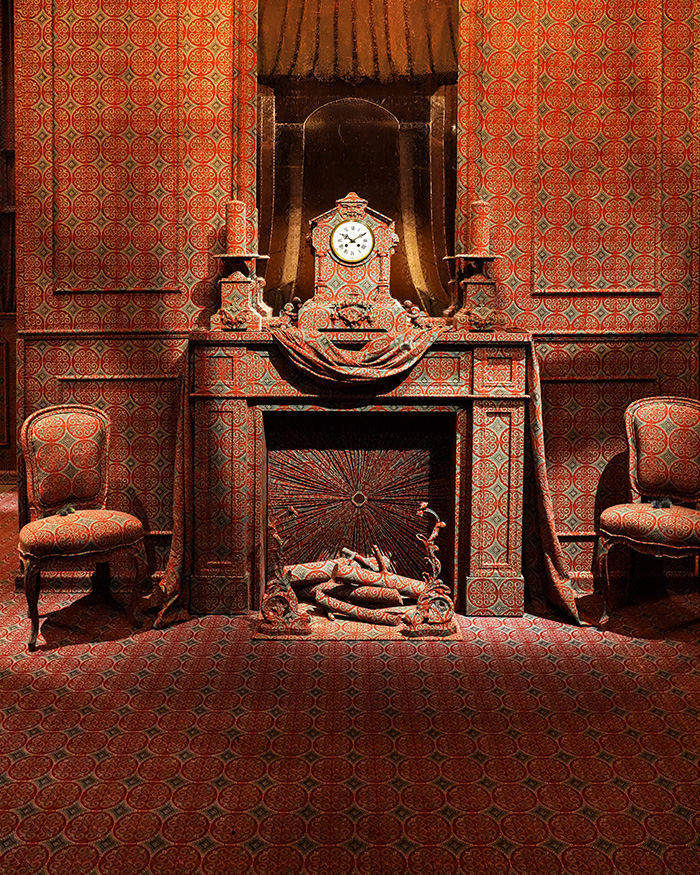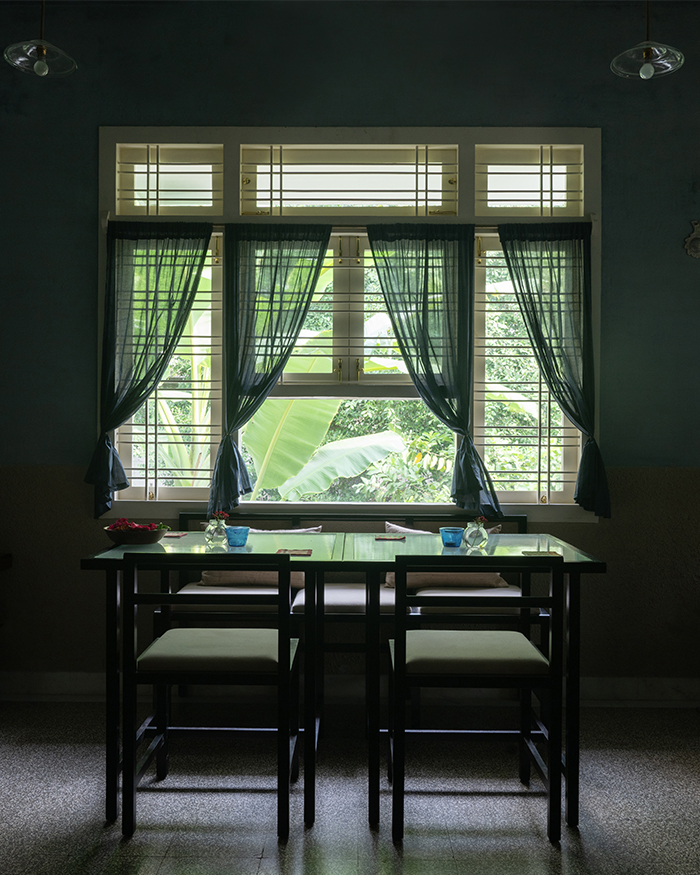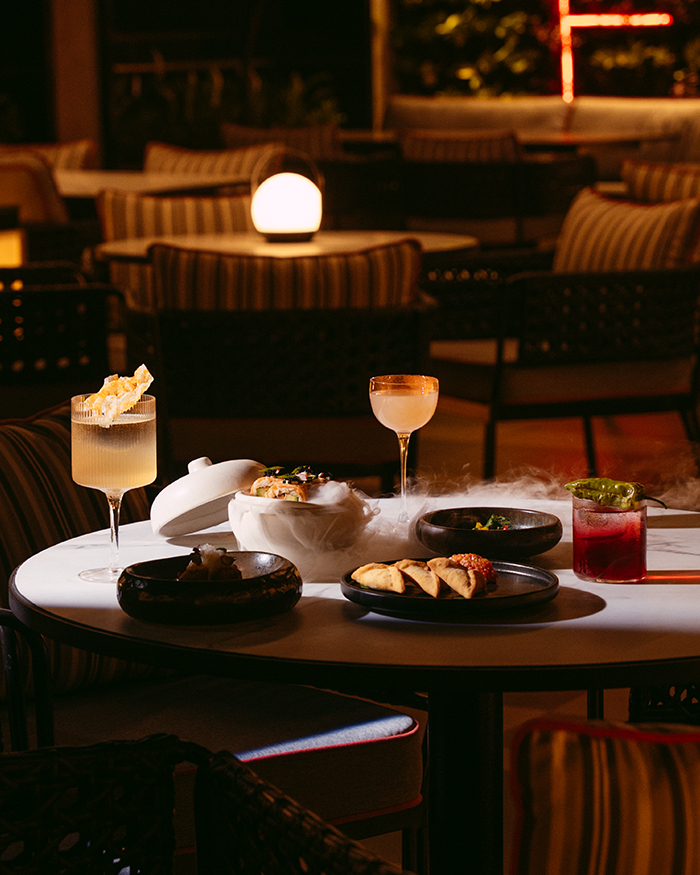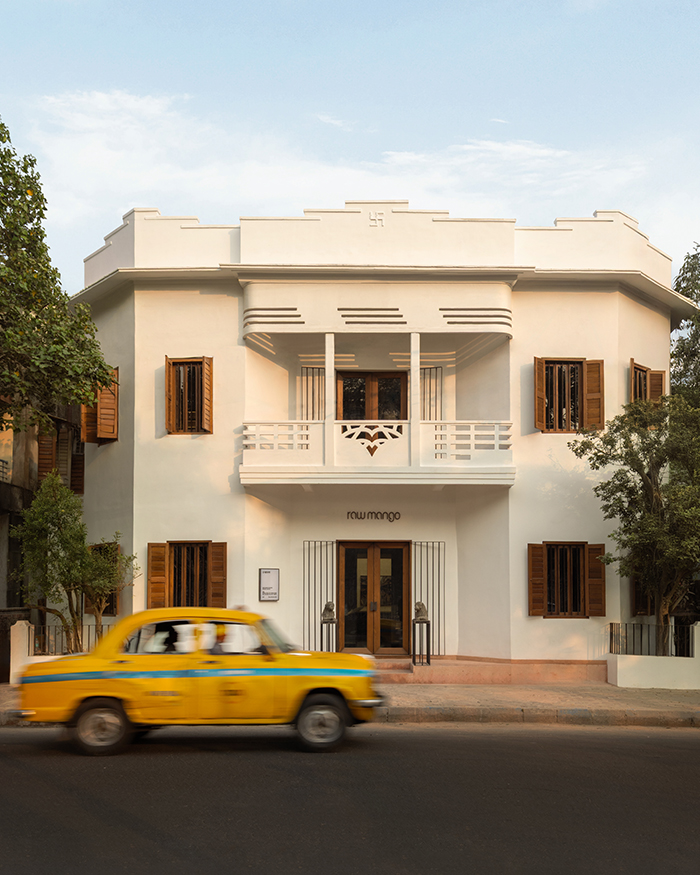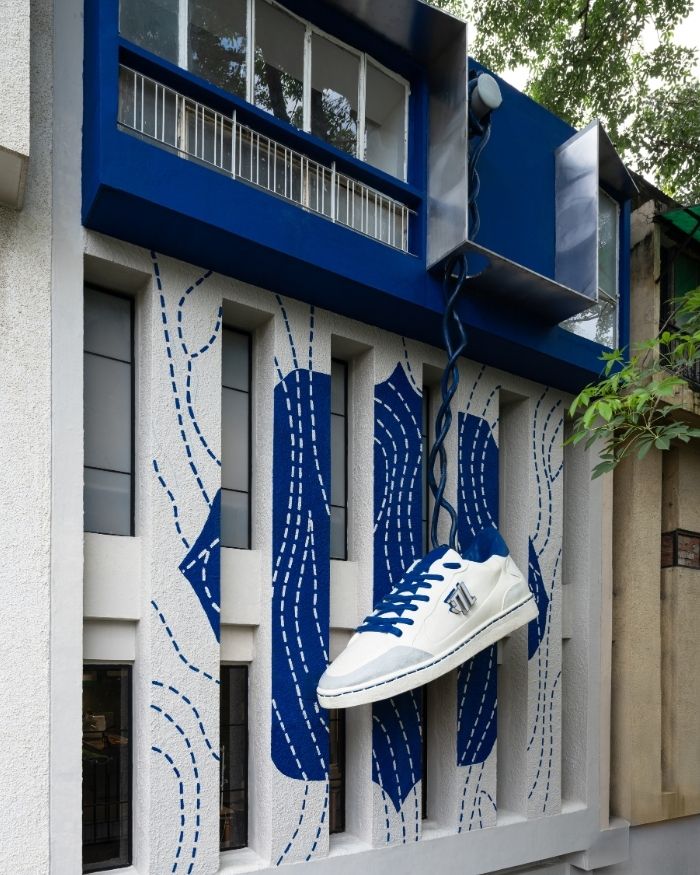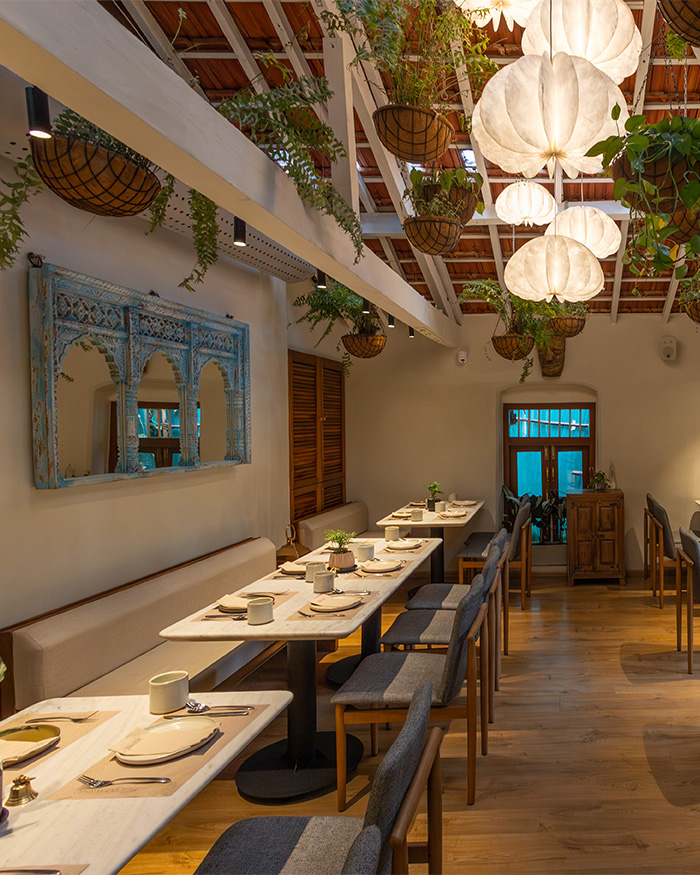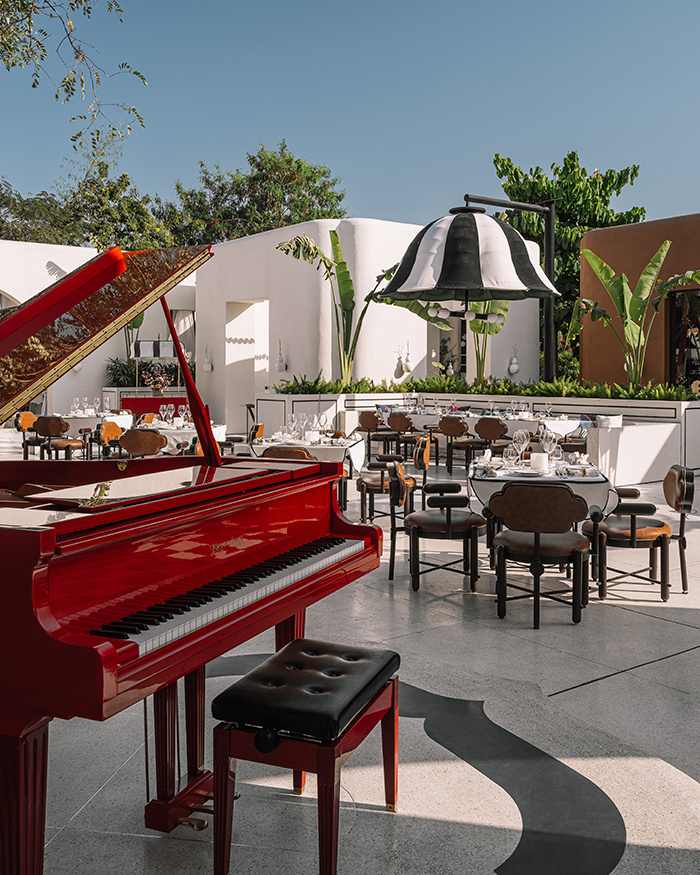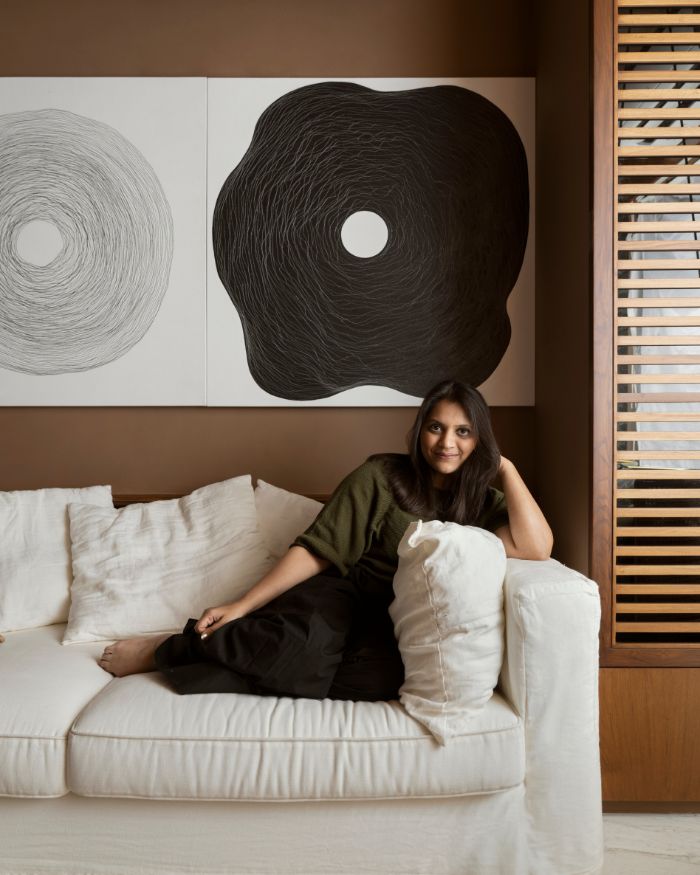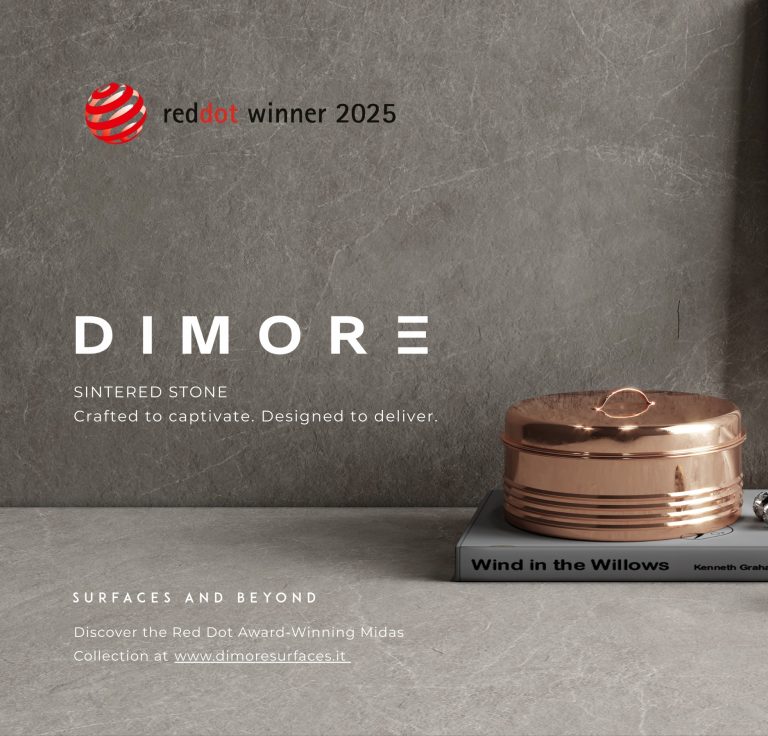There is enough discourse around Kolkata’s grand Neo-Classical architecture. Elaborate sprawling bungalows, dripping with unhindered elan. Mind-numbing beauty at every corner. Despite its age, this 50-year-old family bungalow is not one of them. It stands at a strange crossroad, between aspiration and imagemaking. Now revived as an office by Jay Shah, Principal at DR&W-Design, Research and Workshop, the structure provides an inroad into not just the merit of restoration but a critique of the architectural elitism that determines which buildings are deemed worthy.
The scale of this bungalow is smaller than the celebrated buildings in the city, standing squarely at two storeys. And it’s not as old, only 50 years. These two permutations have produced numerous contradictions in its expression — oversized chatri chajjas, fort-like merlons appearing on parapets, festoons adorning a jharokha and Greco-Roman guttae. It would not be far-fetched to call it kitsch. But who decides what buildings are worth restoring and which ones fall under the hammer? Who decides what we consider beautiful?
“This project is not just a story of adaptive reuse — it is a meditation on continuity”
Jay Shah of DR&W
